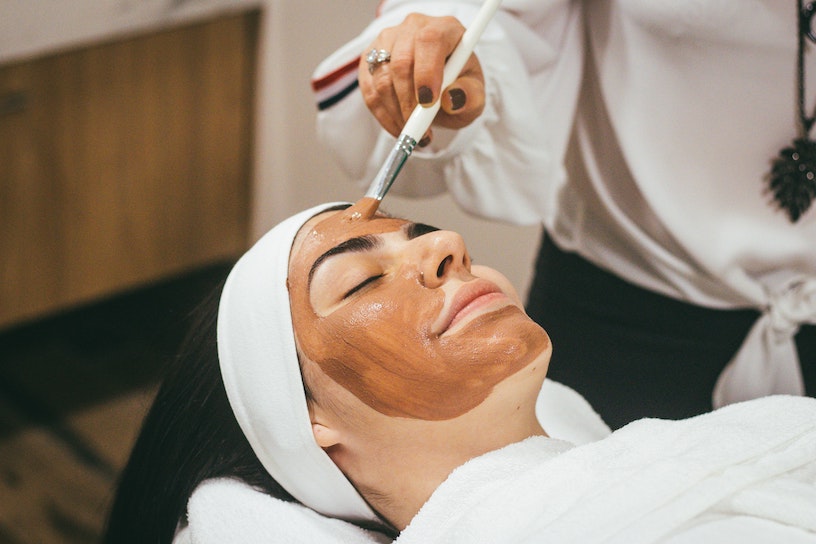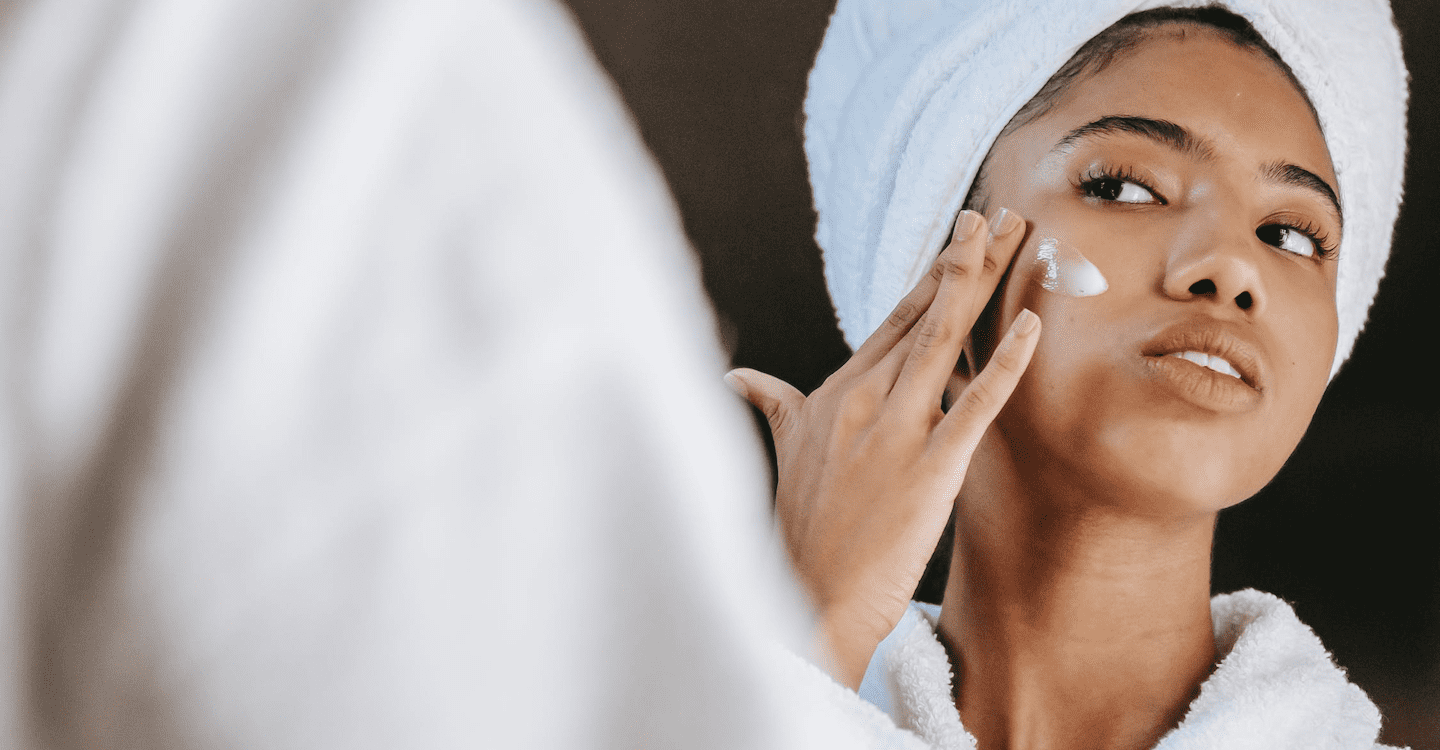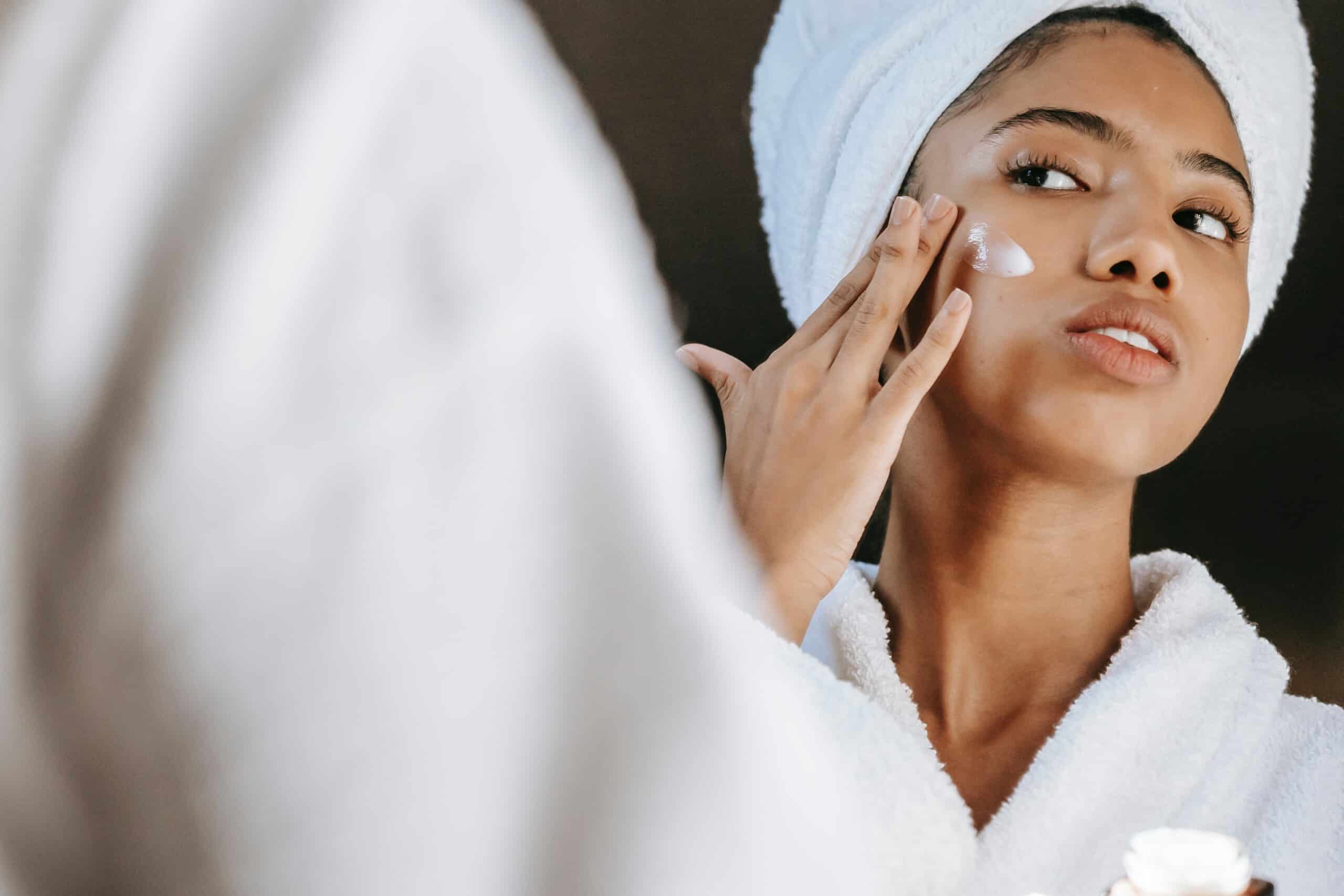AHA vs. BHA: Which Exfoliant Should You Choose?
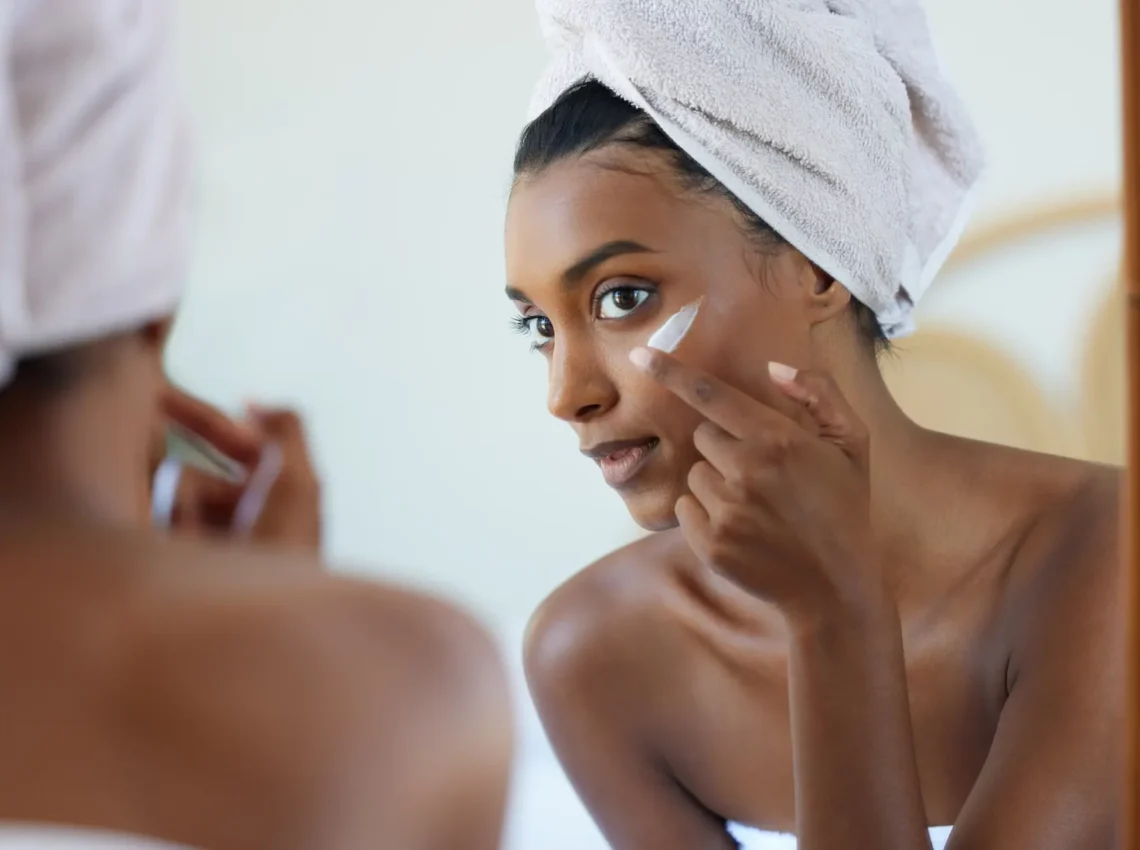
Sometimes skin care can feel like a science experiment. There are concoctions, emulsions, and myriad types of facials. It’s fun to tinker, but it’s also confusing — especially when our favorite products come labeled with acronyms that are harder to make out than the periodic table.
Some such acronyms are AHA and BHA. These stand for alpha and beta hydroxy acid, respectively. But don’t worry, you don’t need a chem degree to understand what these ingredients do. We’ll break it down so you know if you should be looking at an AHA vs. BHA next time you’re strolling the skin care aisle or booking a facial.
What is AHA?
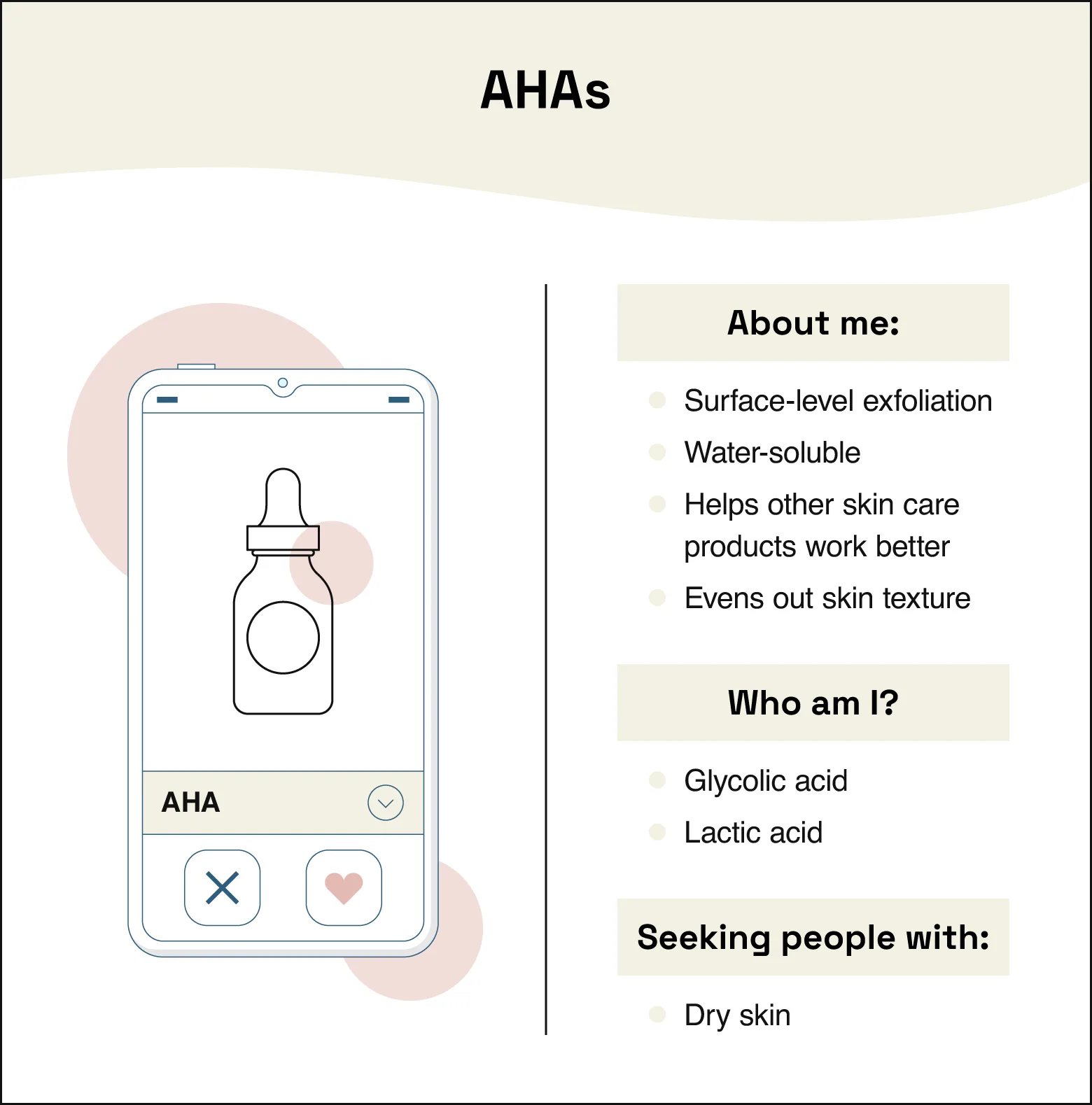
Alpha hydroxy acid (AHA) is a water-soluble acid that helps:
- Minimize the appearance of pores
- Even out skin tone
- Promote collagen production
Because AHAs are water-soluble, they affect the uppermost layer of your skin, removing dead skin cells. This makes it easier for other products in your routine to absorb into your skin. AHA may not be the best acid for sensitive skin, however, because too much of it can disrupt your skin’s barrier. This causes irritation and can make your skin break out or have an uneven texture.
To avoid irritation or disrupting your skin barrier, limit your AHA use to one product in your routine and start with a low concentration. The FDA recommends using a maximum concentration of 10%, but you should start with less if you’re new to chemical exfoliants.
You should also have rest days where you focus on soothing and moisturizing your skin to help maintain a healthy skin barrier. You might even want to try skin slugging, which some people find extra soothing after exfoliating.
Common types of AHAs you’ll find in skin care include:
- Glycolic acid
- Lactic acid
- Malic acid
- Citric acid
- Tartaric acid
- Hydroxycaprylic acid
- Hydroxycaproic acid
You’re most likely to spot glycolic and lactic acids in your skin care because these ingredients are less likely to cause skin irritation than other types of AHAs.
What is BHA?
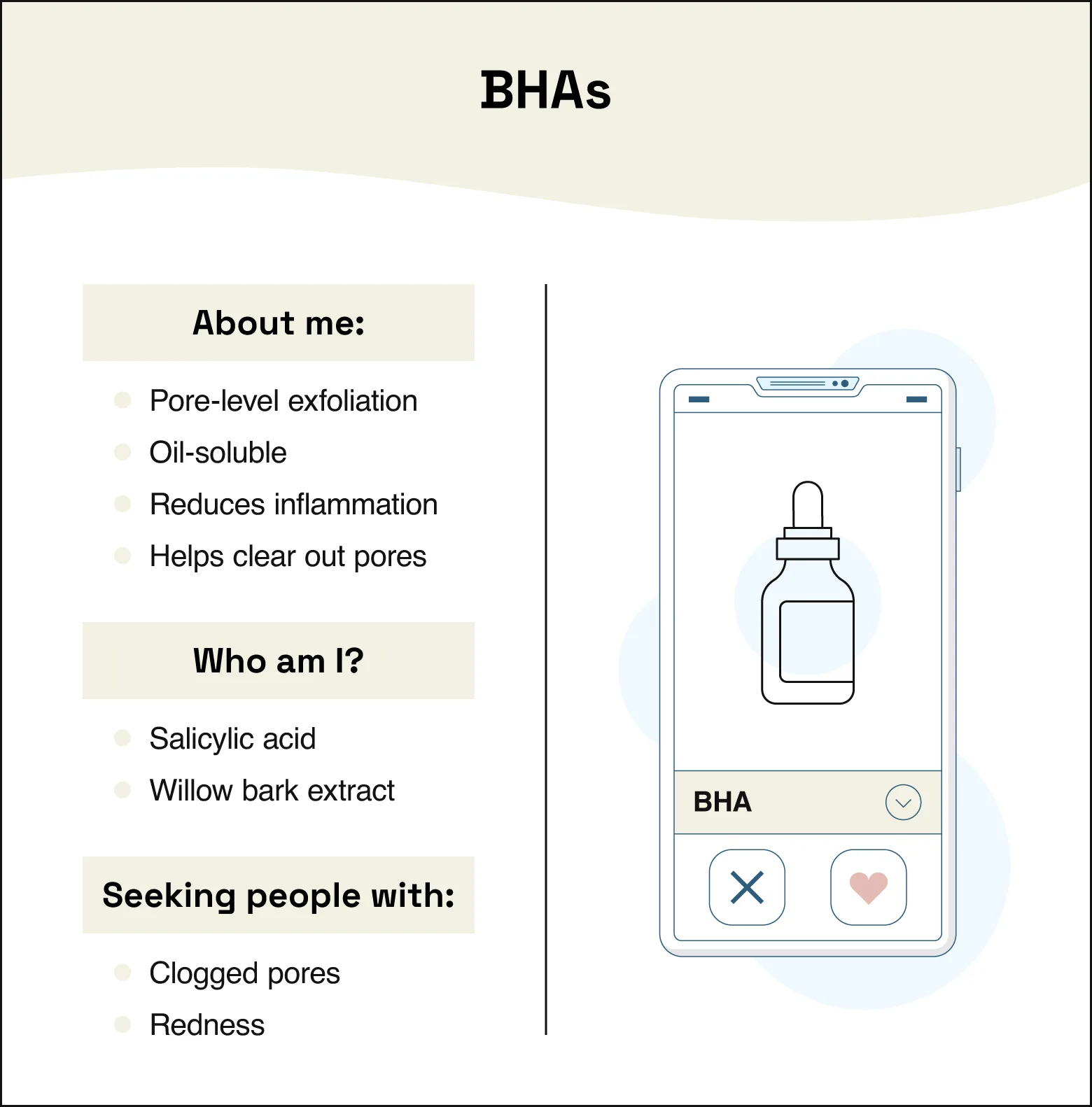
Beta hydroxy acid (BHA) is an oil-soluble acid that helps:
- Clear out clogged pores
- Reduce redness
- Combat inflammation
BHAs are lipids, which means they work best on oily skin and are able to penetrate the skin deeply. This can help those with acne clear out clogged pores, like the sebaceous filaments many people mistake for blackheads on their nose.
Some people find that BHAs are more gentle on their skin than AHAs. Common BHAs include:
- Salicylic acid
- Willow bark extract
- Betaine salicylate
Of these BHAs, salicylic acid and willow bark extract are the most common in skin care.
AHA vs. BHA similarities
Both of these acids are chemical exfoliants, which means that the the ingredients break down dead skin cells. This is different from physical exfoliants, like scrubs or dermaplaning procedures, where the action of using the product or skin care tool removes dead skin cells.
Chemical exfoliants are great for reducing fine lines, improving skin texture and brightness, and sloughing off dead skin. Regular exfoliation is a key part of maintaining skin health because it reveals new skin cells underneath.
You should also know that both AHAs and BHAs increase photosensitivity. This means they leave your skin more vulnerable to sunburns.
It’s extra important to remember to wear sunscreen every day when you’re using either ingredient in your skin care. They can increase your sensitivity for a couple of weeks, so continue to protect your skin even if you decide to remove them from your routine.
In some cases, you’ll want to avoid AHAs and BHAs. If you have broken skin, use prescription medications, or are pregnant, you should speak to your doctor before using chemical exfoliants in your routine.
AHA vs. BHA differences
| AHAs | BHAs |
|---|---|
| ● Water-soluble ● Exfoliates skin’s surface ● Best for dry skin | ● Oil-soluble ● Penetrates pores ● Best for redness and clogged pores |
AHAs are best for dry skin, as they are water-soluble and exfoliate your skin’s surface. Meanwhile, BHAs are best for oilier skin (specifically redness and clogged pores), as they are oil-soluble and can penetrate pores.
Can I wear both AHA and BHA at once?
Which Should You Choose?
| Skin Concern | AHA | BHA |
|---|---|---|
| Acne | Recommended | Recommended |
| Redness | Not recommended | Best |
| Dry skin | Best | Not recommended |
| Wrinkles and fine lines | Recommended | Recommended |
| Hyperpigmentation | Recommended | Recommended |
You can wear AHAs and BHAs simultaneously — many products will have a mix of each. Depending on the product, AHAs and BHAs are usually used during the toner or serum stage of your routine. Make sure to moisturize and use sunscreen after using any AHA or BHA because exfoliating leaves your skin vulnerable to sun damage.
You can use AHAs or BHAs in your morning routine, but it’s better to use them at night to reduce your risk of sun damage. Not sure if one ingredient would be better for your skin than the other? Check out these recommendations based on your skin concern.
Acne
Exfoliation is a key aspect of clearing up acne because dead skin cells can accumulate and clog your pores. But you also need to keep in mind that acne-prone skin is easily irritated, and over-exfoliation can make it worse.
Start with using a combination of AHA and BHA once or twice weekly. This combination will combat all types of pimples. Make sure the rest of your skin care routine is extra soothing to protect your skin barrier while your skin adjusts to chemical exfoliation.
Redness
If you have redness due to a skin condition such as eczema or rosacea, you should consult your dermatologist before introducing chemical exfoliants into your routine. These ingredients could interact with your current medications or irritate your skin, causing more redness.
If you have redness due to other issues like acne scarring, skin irritation, or cystic acne, try a BHA. Because BHAs penetrate deeper levels of the skin, they’re ideal for issues that tend to occur under the top layer of your skin. BHAs are also anti-inflammatory, so they’re a better choice for red, irritated skin.
Dry skin
Exfoliation is great for dry and dehydrated skin because when you remove dead skin cells, it allows your other skin care products to work better. AHAs are ideal for people with dry skin because they target just the top layer of skin.
It’s extra important for people with dry skin types to follow their exfoliation with an extra-hydrating cream or skin care mask to get the most benefits out of their routine.
Wrinkles and fine lines
If you’re looking for a chemical exfoliant that will combat the signs of aging, then both AHAs and BHAs can help. Exfoliation helps stimulate collagen production. A lack of collagen is a key reason why our skin changes as we age, so exfoliation can help prolong and reduce the effects of aging.
If you have sun spots or other texture-related issues that come with age, you might want to try an AHA. If you’d like to reduce wrinkles and pores, you might want to go with a BHA. If you’re not sure, try both!
Hyperpigmentation
A combination of AHA and BHA is ideal for combatting hyperpigmentation. Hyperpigmentation can occur in multiple layers of skin, so a combination of AHA and BHA helps target hyperpigmentation at all angles.
If you need help with skin care experimentation, schedule a consultation with your favorite esthetician today for personalized recommendationson whether an AHA or BHA is best for you.
AHA vs. BHA vs. PHA
PHAs, also known as polyhydroxy acids, are similar to AHAs. However, they have a larger molecular structure than both AHAs and BHAs, which means that they don’t penetrate skin as deeply. This makes them ideal for people with extra-sensitive skin because they’re the least irritating type of chemical exfoliant.
AHA vs. BHA FAQs
Hydroxy acids are derived from natural things like fruit peels, sugar cane, and bark. These acids work to “loosen the glue that holds dead skin cells together,” as one MD put it. By doing this, they clear away old stuff from your skin to leave you looking brighter and feeling tighter.
Products come with different concentrations of these acids. Everyday serums or creams will likely have a lower concentration for gentler exfoliation, while once-in-a-while peels amp things up to cleanse deeper. The FDA suggests using an overall concentration of less than 10% daily.
AHAs and BHAs are both great choices for chemical exfoliants. You might consider one over the other based on your skin type and concern. If you have dry skin, AHAs can help make your moisturizer more effective. If you have redness, BHAs are anti-inflammatory. For hyperpigmentation or anti-aging, try a combination of the two.
If you want to shrink your pores, try a BHA. BHAs go beyond the superficial layer of your skin, so they can help clear out your pores. While pore size is largely genetic, this can help reduce the look of your pores and make them appear smaller.
If you’re using both AHAs and BHAs in your skin care routine, you should use the BHA first. This is because BHAs are oil-soluble, so they’ll be able to go beyond your skin’s natural oils while AHAs can’t.
Yes, salicylic acid is a BHA. Other common BHAs include salicylic acid, willow bark extract, and betaine salicylate.
Yes, glycolic acid is an AHA. Other common AHAs include lactic acid, malic acid, citric acid, tartaric acid, hydroxycaprylic acide, and hydroxycaproic acid.
Chemical exfoliants come in many forms and are a great way to keep most skin types healthy and radiant. Learning more about AHA vs. BHA exfoliants is a great place to start on your at-home skin care journey. If you’re hungry for more knowledge, get in touch with an esthetician through StyleSeat for expert skin recommendations.
